There are few things more inspiring to the next generation of budding astronomers than having space and astronomy themed home décor around the house. Even better is when they’ve been involved in the process of creating it for themselves.
In this arts and craft project we are using some basic materials to create a beautiful Solar System mobile that can be hung in a child’s bedroom, so the wonder of space will be the first thing they see when waking up each morning and the last thing they see each night before going to sleep.
But our DIY Solar System mobile would also look great anywhere in the house!
Looking for more astronomy arts and craft projects for kids? Create a stomp rocket launcher or make your own comet model. Or discover our 6 astronomy experiments that can be done at home.
For more practical stargazing, read our guide on how to get kids interested in astronomy.
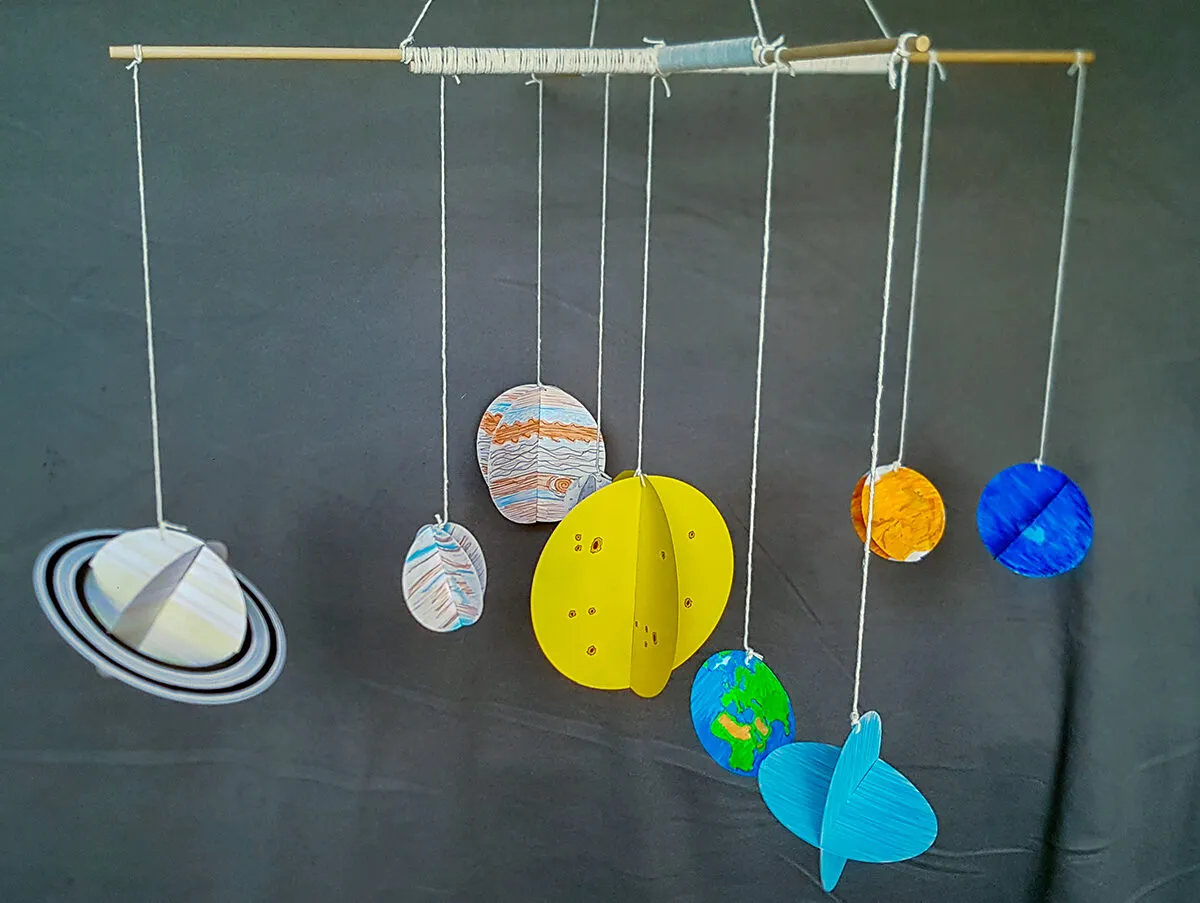
Although our Solar System mobile is an arts and craft activity, there are many learning opportunities along the way.
While it is not possible to accurately replicate the relative sizes and distances of each Solar System body in such a small space, we have made sure that the planets are different sizes and they can be placed at different distances from the Sun.
Follow our guide below to find out what diameter your cardboard planets need to be, how to create the wooden structure from which they will hang, and how to put the finishing touches to your Solar System mobile.
We've also provided a few details about each planet that are worth including when you're decorating each one in the Solar System model.
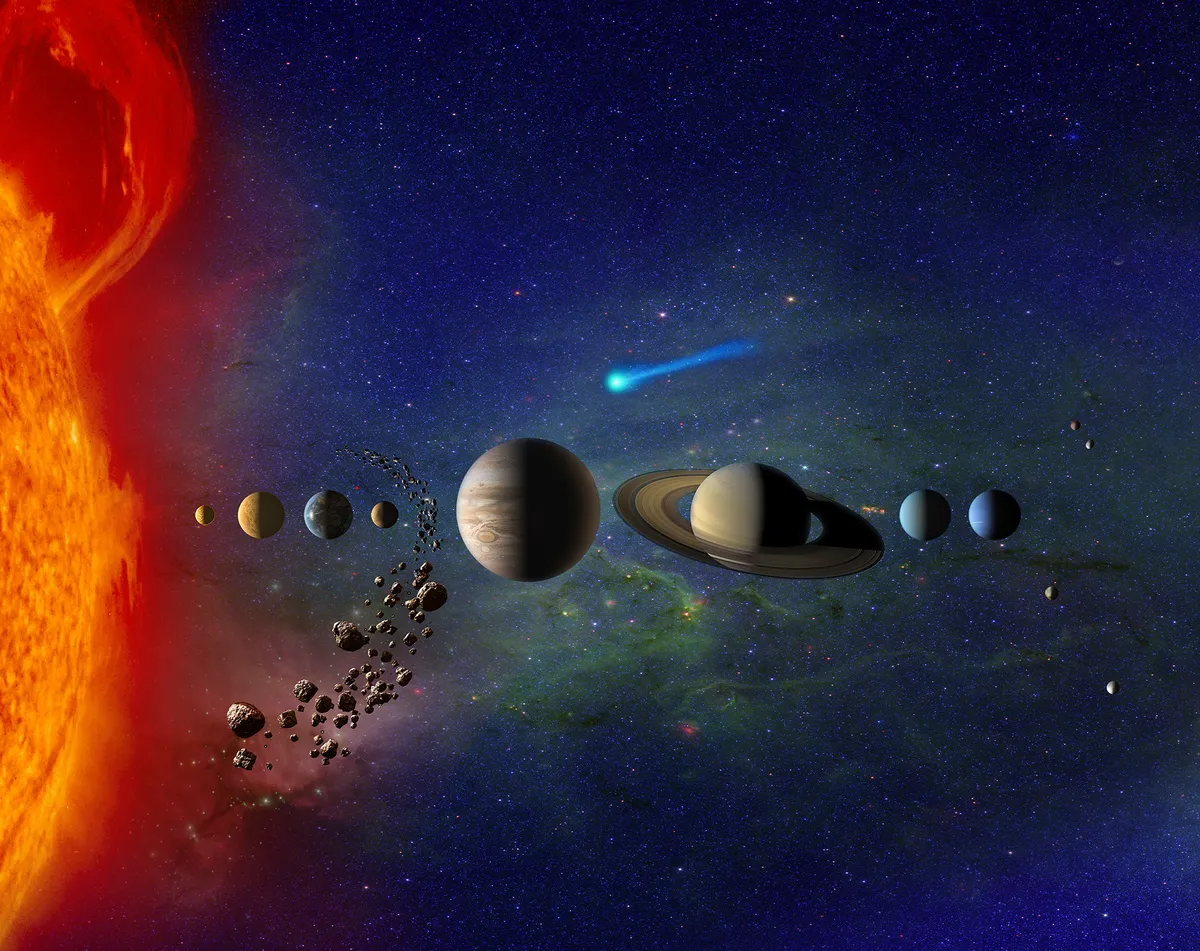
How to make your Solar System mobile
Each body is made from two circular pieces of card that slot together to create a three dimensional shape.
The surface features of each planet need to be drawn onto both sides of both circles before they’re put together, with all four sides as closely matched as possible. This could be a great whole family activity.
It is helpful to have these cardboard circles cut out before you start. The diameter of the circles we used for each planet is as follows:
| Solar System body | Cardboard disc diameter (cm) |
|---|---|
| Sun | 15 |
| Saturn's rings | 15 |
| Jupiter | 12 |
| Saturn | 10 |
| Uranus | 8.5 |
| Neptune | 8.5 |
| Venus | 7 |
| Earth | 7 |
| Mars | 7 |
| Mercury | 5 |
Colouring and decorating your mobile's planets is great chance to learn about the visible surface of every member of the Solar System, using photos in books or our guides below as a reference (click on each of the planets for a guide to that planet).
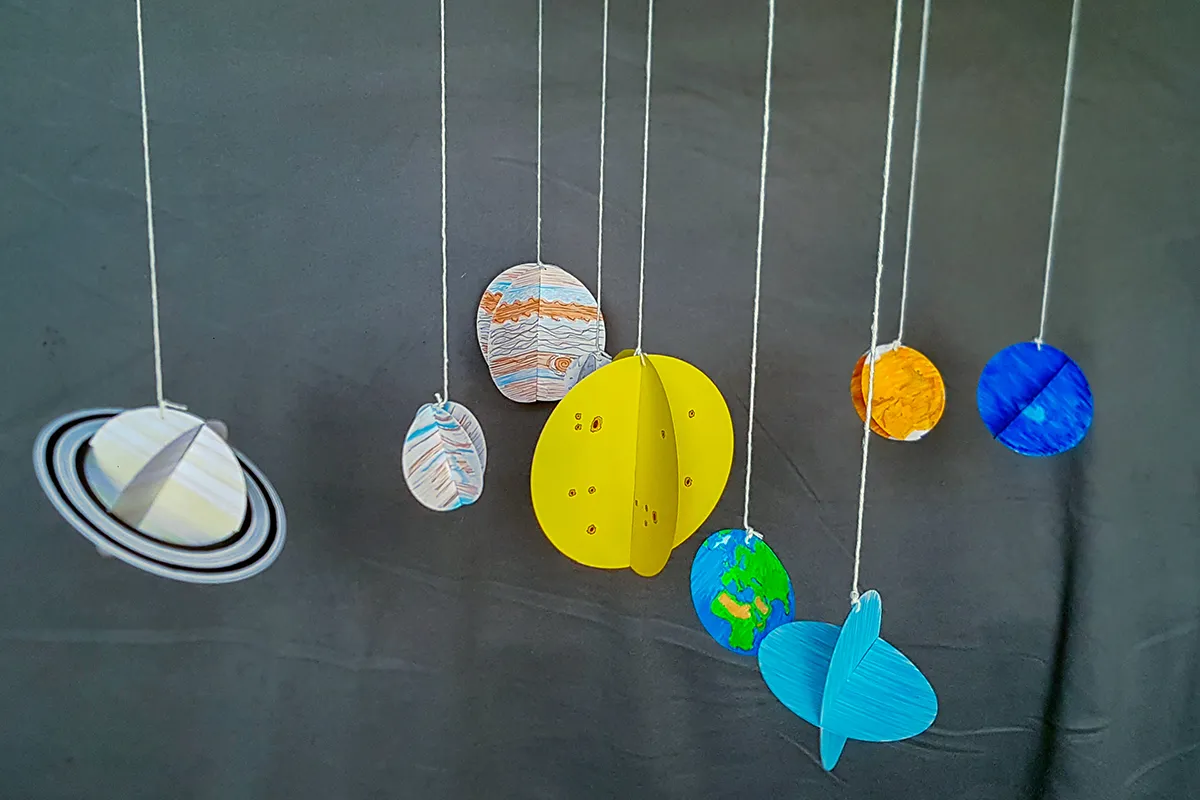
On the Sun, we have included sunspots so you can explain what they are.
Mercury has a rocky surface with craters similar to our Moon
Venus has a thick atmospheric layer that obscures the surface below.
Earth is a mixture of land and water and is the only planet in our Solar System to have liquid water on the surface.
Mars has a very orange coloured surface with darker regions, as well as polar ice caps.
Jupiter has very interesting cloud belts and the Great Red Spot, which is a huge storm system that is larger than planet Earth.
Saturn has subtle banding across the surface and the beautiful rings.
Uranus and Neptune both have subtle banding on their surface too along with quite dark rings.
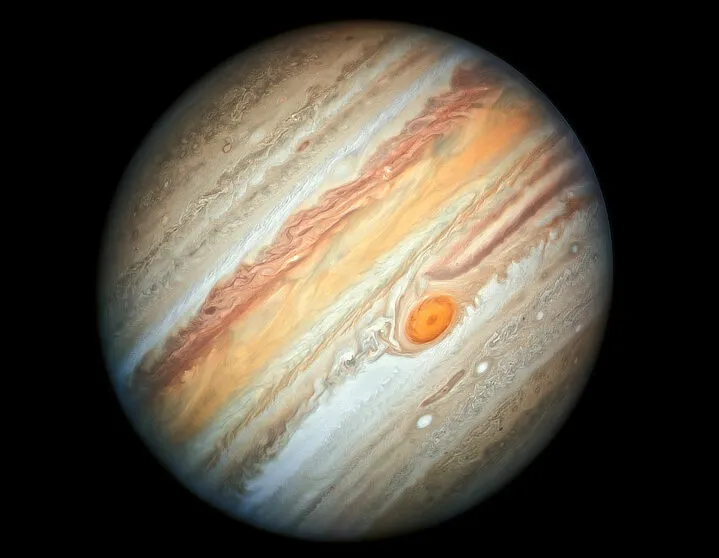
Each Solar System body is uniquely beautiful and it’s worth taking the time to reproduce their features as well as you can.
When hanging the planets on the mobile, we placed them in the correct order of distance from the Sun and used the opportunity to demonstrate differences in axial tilt as an added point of interest.
In our tools and materials list below we've stipulated using 60cm dowels, but we used 6mm thick cake dowels that were 30cm long and glued them together using one of the dowels as a support strut, then bound them with string.
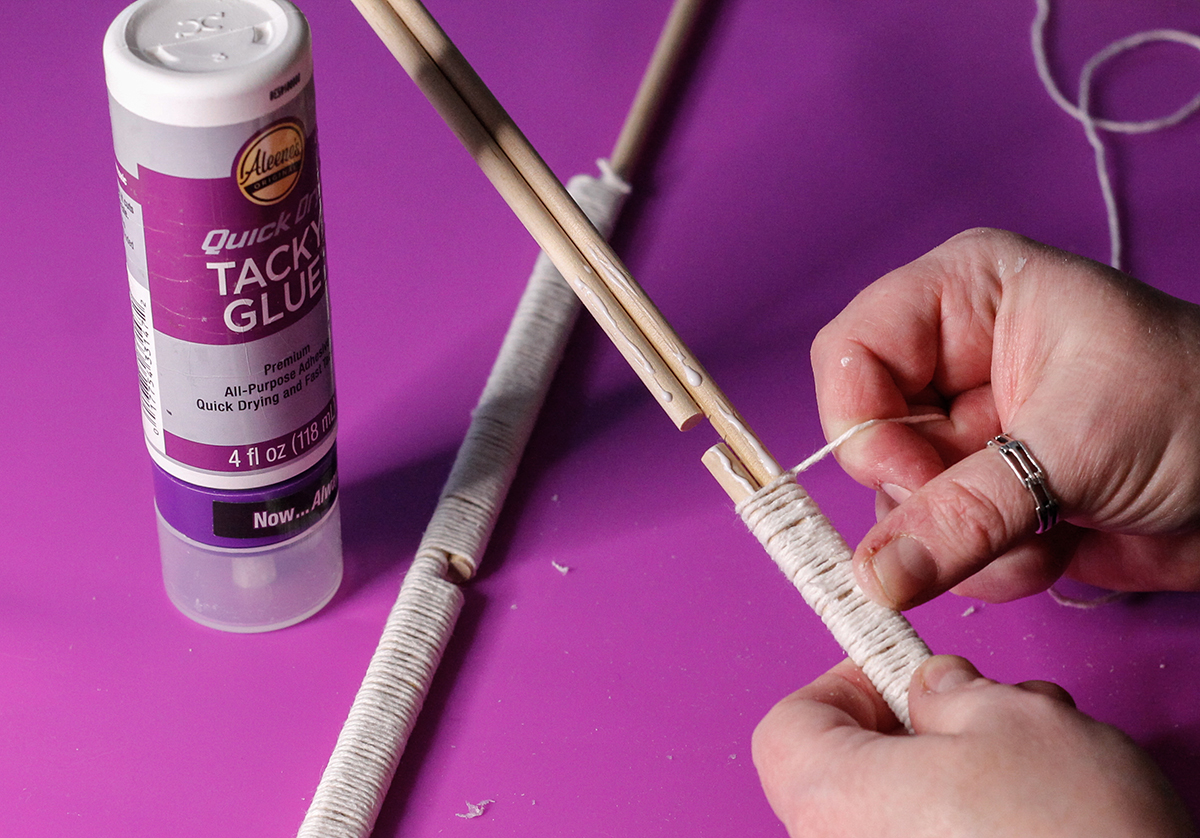 To create your mobile, if you need to, join your shorter dowels together to create 2 x 60cm lengths.
To create your mobile, if you need to, join your shorter dowels together to create 2 x 60cm lengths.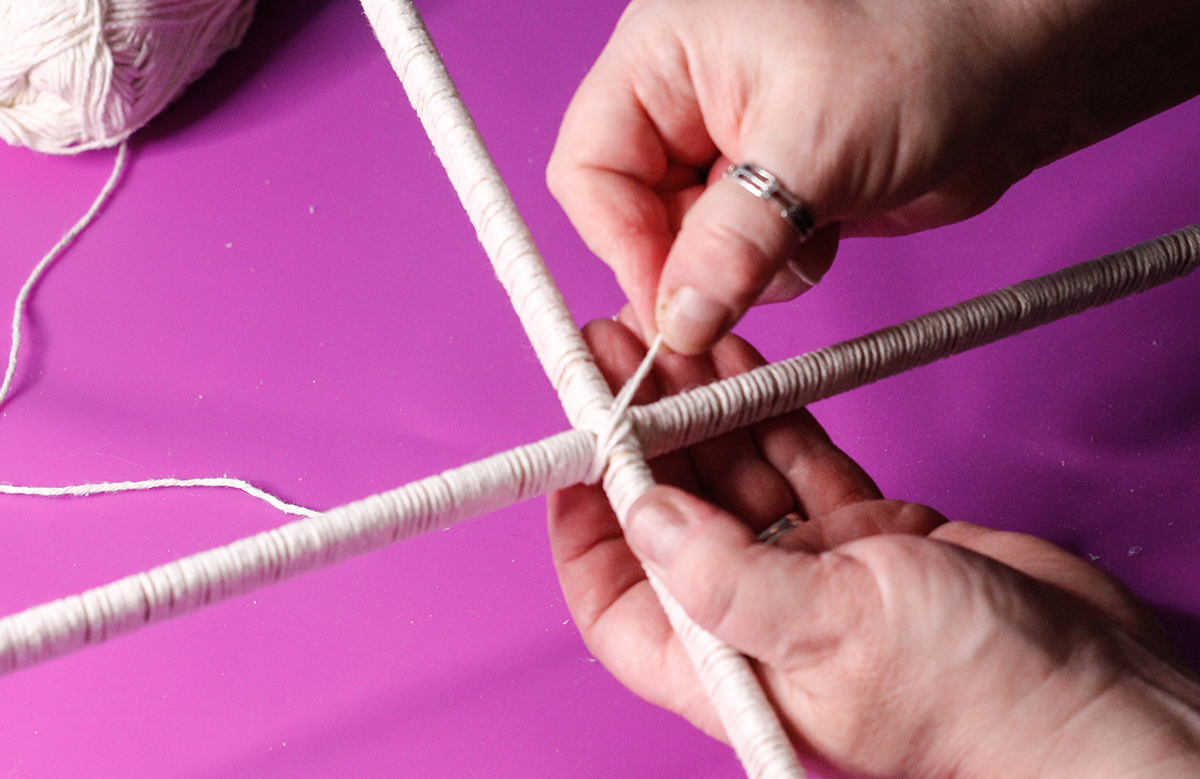 Lay one across the other and bind them together tightly with cotton yarn to form a big cross. This forms the structure from which the planets will hang from.
Lay one across the other and bind them together tightly with cotton yarn to form a big cross. This forms the structure from which the planets will hang from.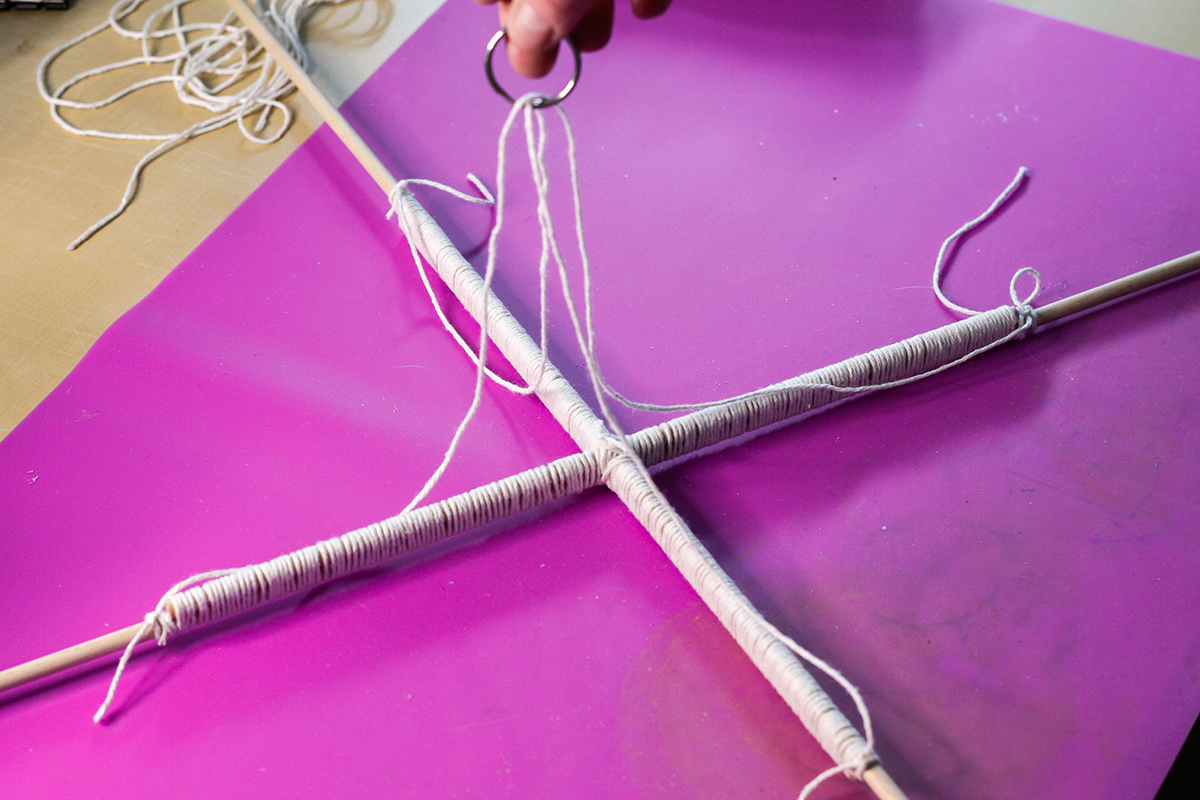 Cut 2 x 50cm lengths of cotton yarn and thread them through the ring. Tie the ends of the first length onto one piece of the cross then tie the second one to the other piece of the cross. This will allow you to hang the mobile from a hook.
Cut 2 x 50cm lengths of cotton yarn and thread them through the ring. Tie the ends of the first length onto one piece of the cross then tie the second one to the other piece of the cross. This will allow you to hang the mobile from a hook.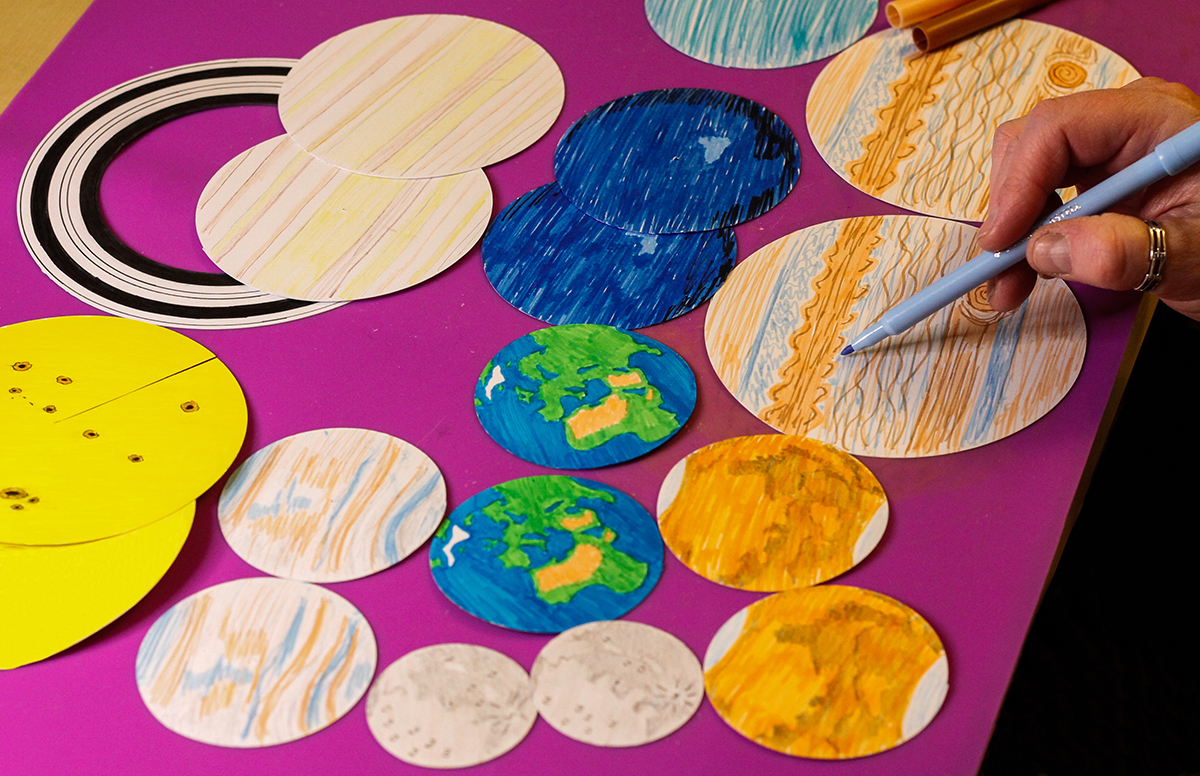 Draw/colour in the surface features onto each of your planets. Remember to cover all 4 sides of each planet. Draw several circles onto the disc for Saturn’s rings and create divisions by colouring blocks of them in with black felt tip pens.
Draw/colour in the surface features onto each of your planets. Remember to cover all 4 sides of each planet. Draw several circles onto the disc for Saturn’s rings and create divisions by colouring blocks of them in with black felt tip pens.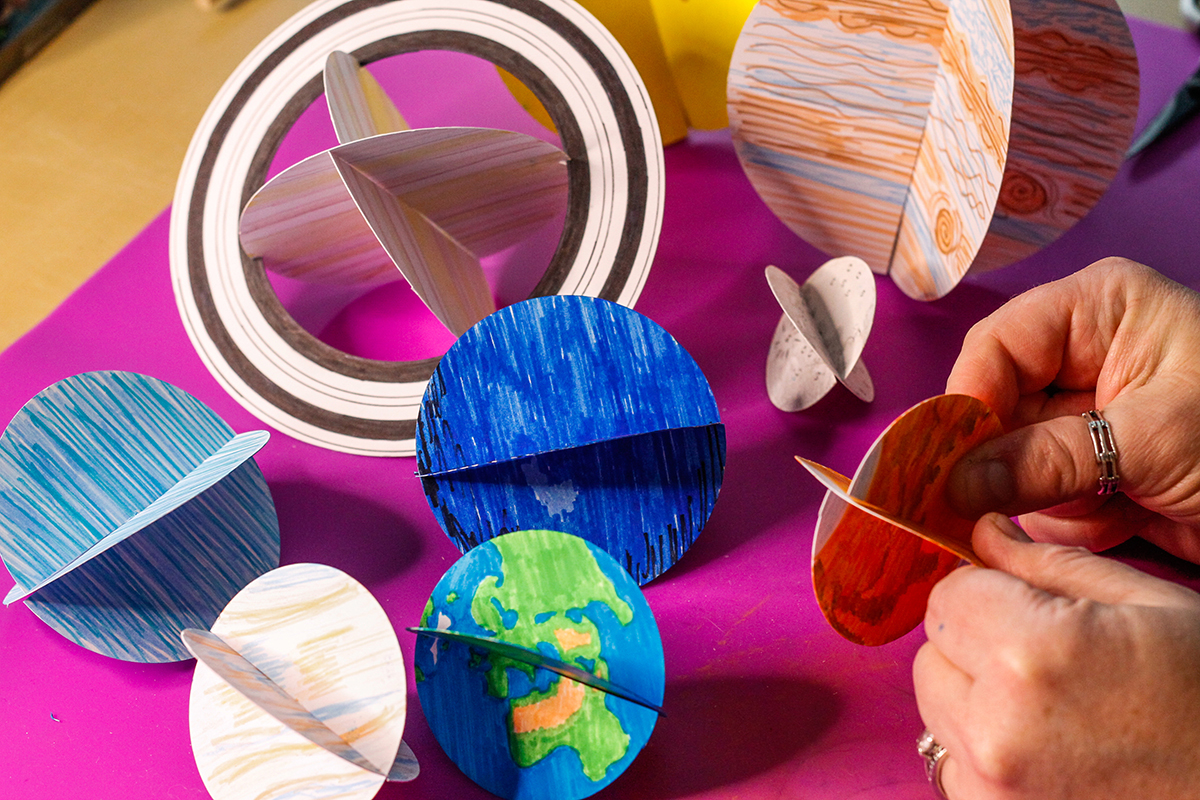 On one disc of each planet cut a thin slit from the bottom edge to the middle, then on the other cut from the top to the middle and slot them together, using a small dot of glue to secure them. Cut the middle 9.5cm out of Saturn’s rings then cut small notches out of the middle edges of Saturn and push the rings into them.
On one disc of each planet cut a thin slit from the bottom edge to the middle, then on the other cut from the top to the middle and slot them together, using a small dot of glue to secure them. Cut the middle 9.5cm out of Saturn’s rings then cut small notches out of the middle edges of Saturn and push the rings into them.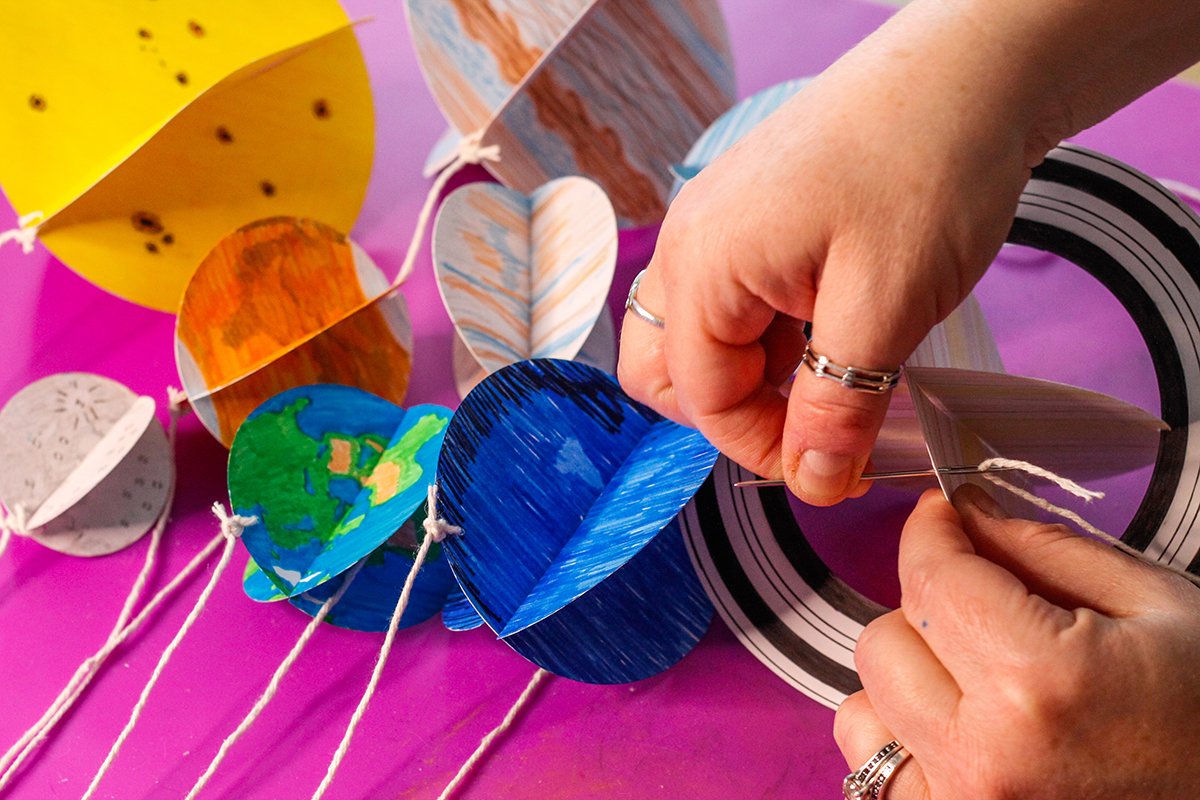 Using a bodkin, make a hole and thread a piece of cotton yarn through the top of each planet and tie the ends. If the planet has an axial tilt, remember to make the hole the correct number of degrees down from the top.
Using a bodkin, make a hole and thread a piece of cotton yarn through the top of each planet and tie the ends. If the planet has an axial tilt, remember to make the hole the correct number of degrees down from the top.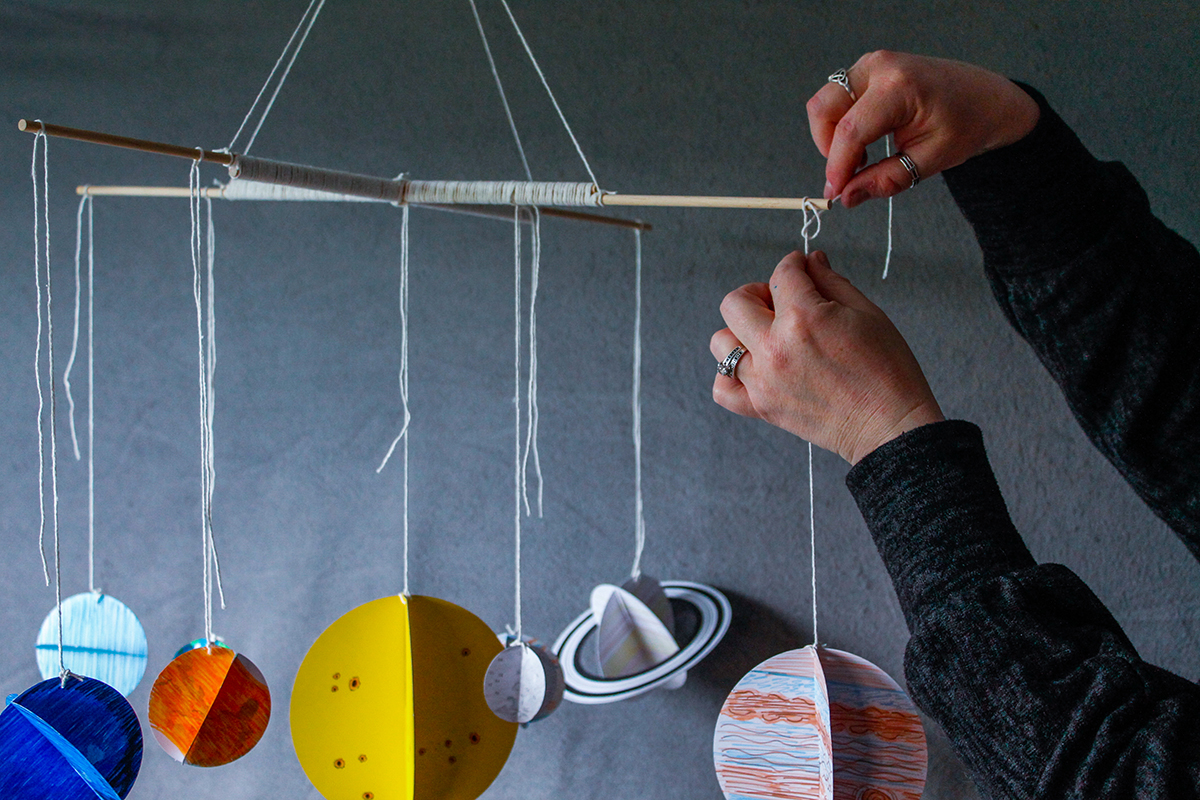 Tie the Sun in the centre, then place the planets in turn onto the arms of the cross, each one being a little further out from the centre and on the next arm. We tied them so they hung 20cm down from the arms then trimmed the ends.
Tie the Sun in the centre, then place the planets in turn onto the arms of the cross, each one being a little further out from the centre and on the next arm. We tied them so they hung 20cm down from the arms then trimmed the ends.
